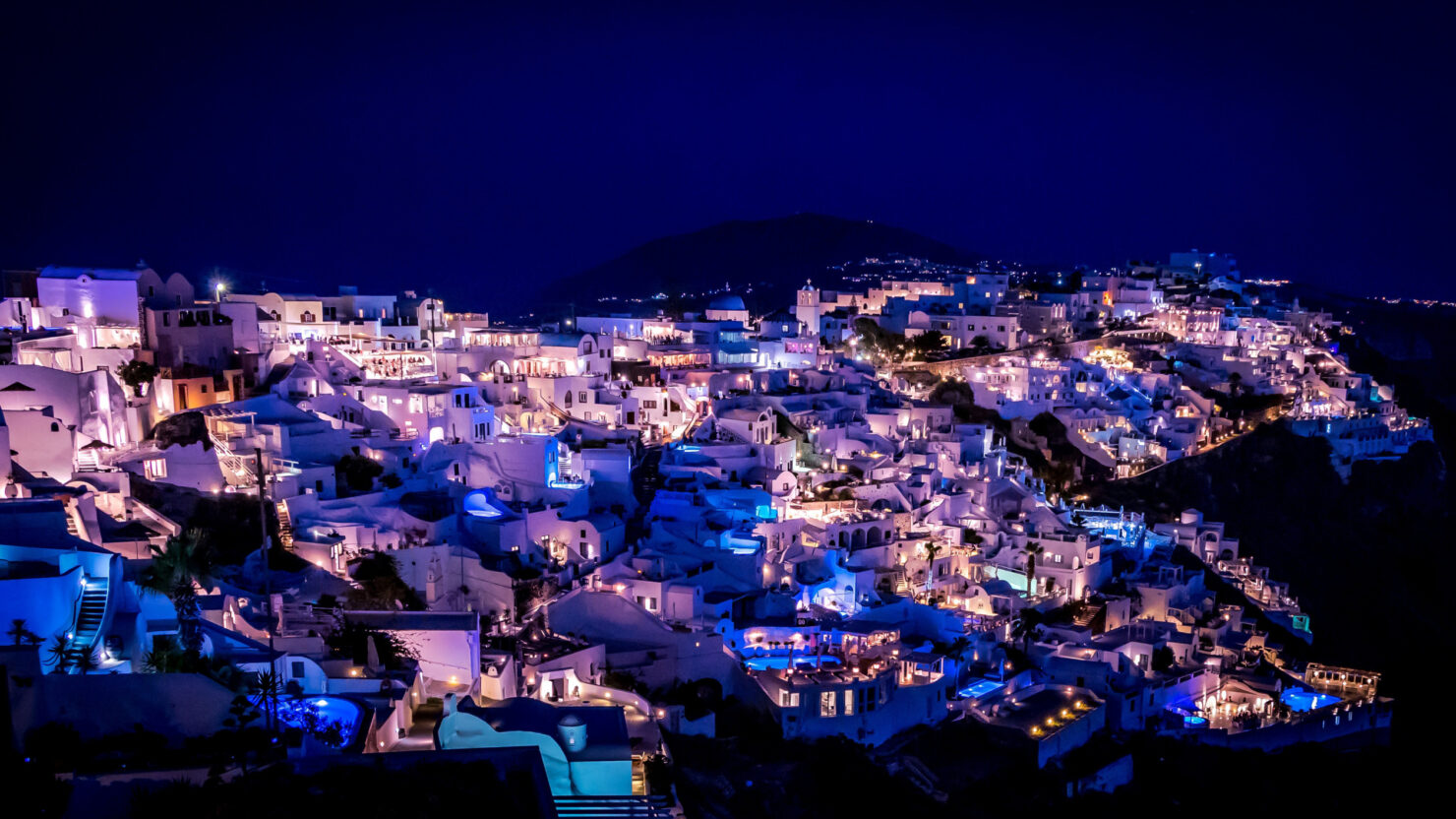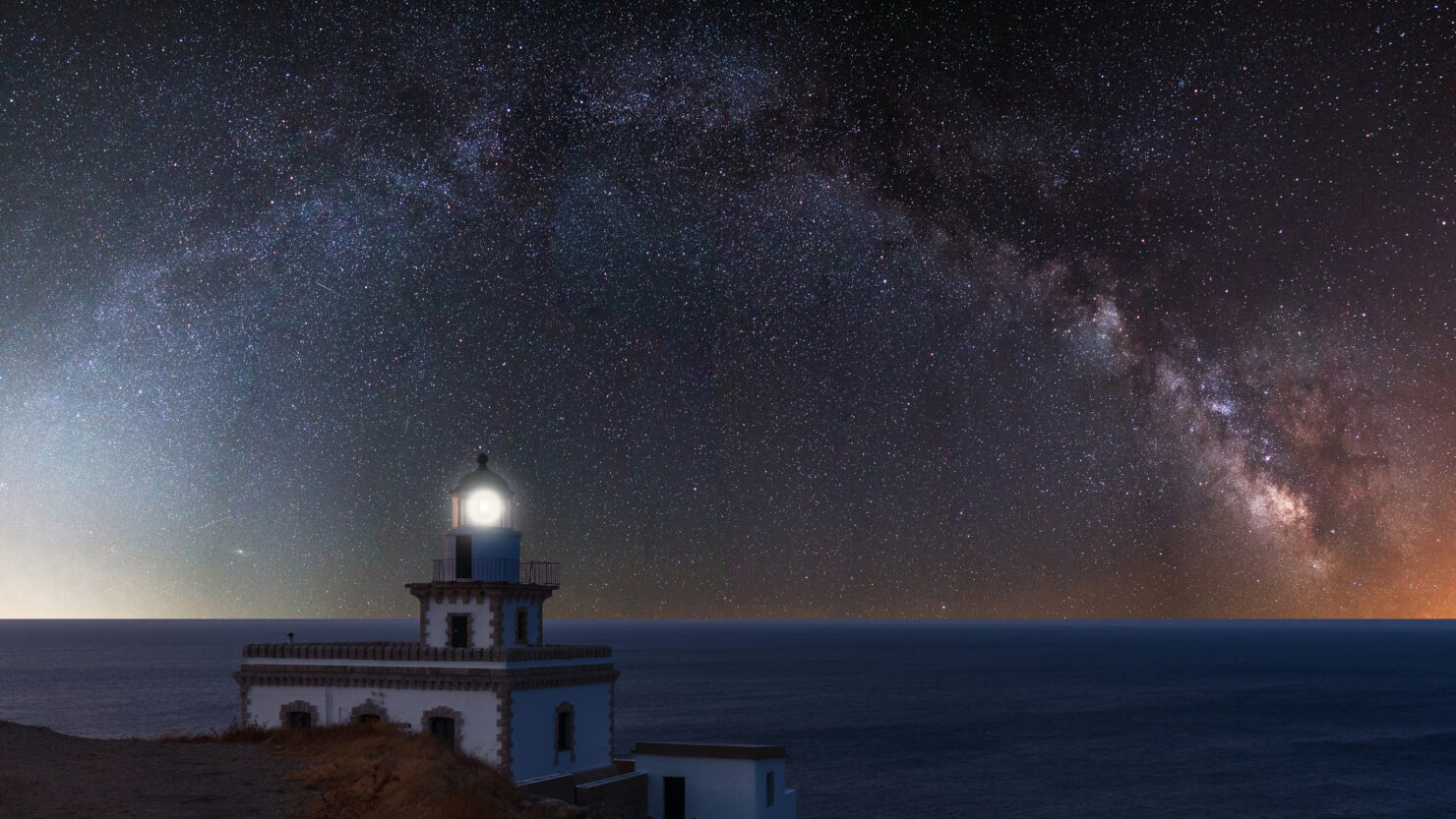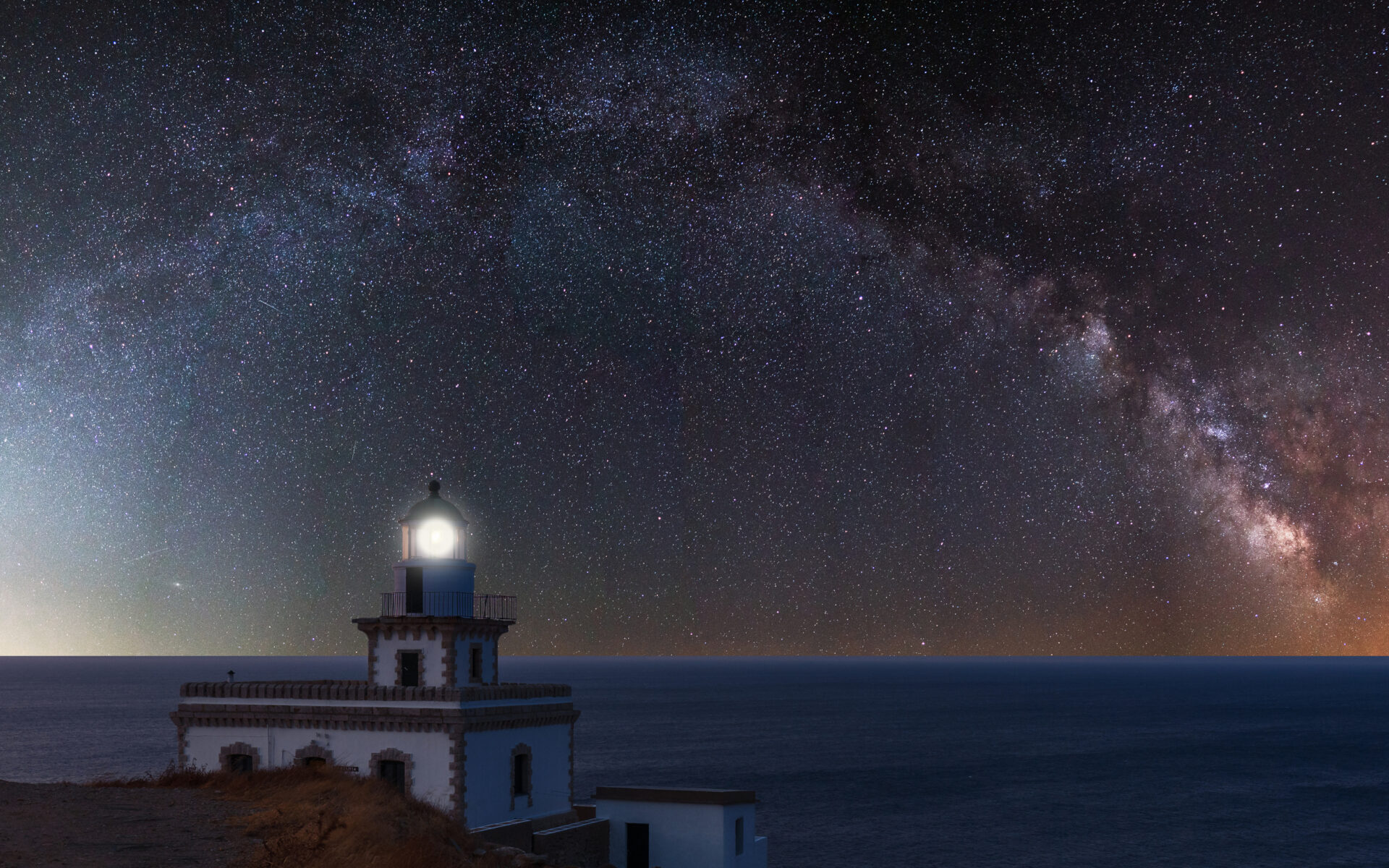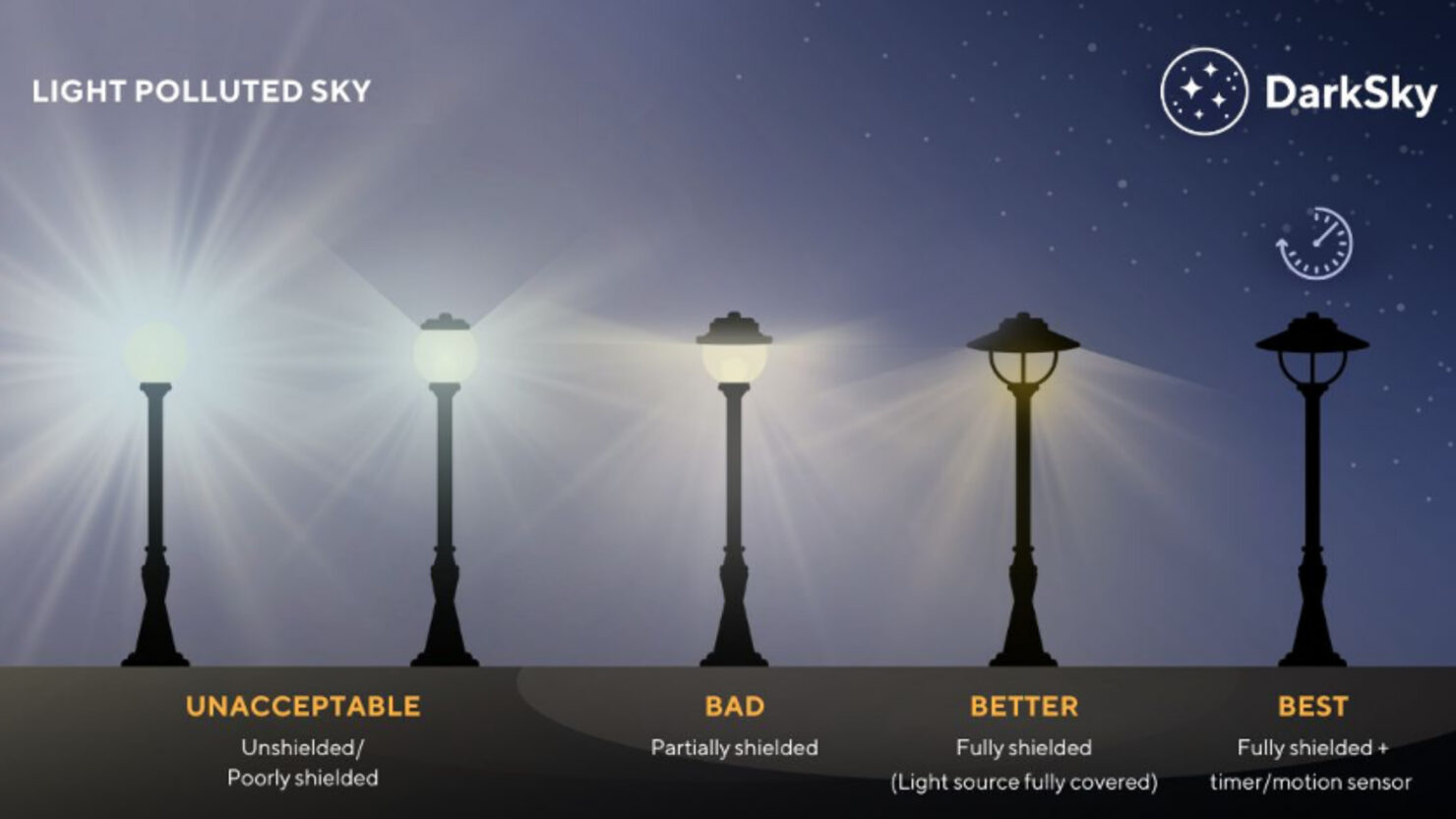A Fight Against Light Pollution
The Greek Paradox: From ancient stargazing to modern light pollution
It’s a striking contradiction, a country that once gazed at the stars now shines light in every direction, especially toward the sky. Greece, the birthplace of astronomy and philosophy, has become a place where the night sky is nearly invisible due to uncontrolled light pollution. Once, ancient philosophers looked upward and charted the cosmos. Today, the same skies are obscured by the glow of excessive illumination, from street lamps and signage to decorative facades and overly illuminated monuments.
The Rising Glow: How skyglow impacts people, wildlife, and culture
Light pollution is not an isolated issue. Global studies show that the Earth’s artificially illuminated surface is increasing in brightness by 2.2% each year (Ref 1). Greece is no exception. Excessive lighting from streets, architectural features, shopfronts, and signage disrupts human health, confuses wildlife, and washes out the stars above.
This phenomenon, known as skyglow, occurs when artificial light scatters in the atmosphere, overpowering the natural darkness and making it difficult to see celestial bodies. The excessive use of high intensity, poorly aimed luminaires that don’t serve an actual purpose exacerbates this issue, leading to a loss of our connection with the night sky.

A Milestone for Greece: The country’s first Dark Sky park
In 2023, became Greece’s first certified International Dark Sky Park, recognised by DarkSky International. This milestone marks growing awareness of the value of natural darkness and the ecological, astronomical, and cultural importance it holds.
To earn this recognition, the park implemented a comprehensive Light Management Plan that prioritises the protection of the night sky. The plan prohibits the permanent installation of outdoor lighting unless it’s justified for essential public safety. Where lighting is necessary, it must be fully shielded, aimed downward, and emit no light above the horizontal plane. Luminaires must use the lowest possible intensity and warm colour temperatures below 2700 Kelvin, and all systems must include motion sensors or timers to ensure light is only used when truly needed.
Signage lighting is restricted or eliminated entirely, with signs expected to be readable using personal or vehicle lights. Even vehicles within the park are required to operate with minimal lighting levels. Recreational lighting activities such as “light painting” or the use of lasers are strictly prohibited unless for educational purposes during astronomical activities. These steps reflect a commitment not just to wildlife, but to the preservation of the public’s right to experience a naturally dark sky.
What does it feels like to visit a Dark Sky Park?
Based on visitor reports published through the DarkSky International network, surprisingly comfortable. Despite the absence of artificial lighting, visitors report that the experience is immersive rather than disorienting. Once eyes adjust, a process known as dark adaptation, paths become visible, and the landscape reveals itself in softer silhouettes. The absence of glare and blue-rich light actually enhances contrast and spatial awareness. Many find the atmosphere calming, even meditative. In the quiet of night, sounds are more pronounced, stars appear brighter, and the environment feels more alive.

(Akrotiri Lighthouse – Santorini, Greece)
Lights Out on Greek Roads: Balancing safety and darkness
An interesting detail, much of Greece’s road network, including parts of its national highways, remains unlit at night. While this reduces light pollution, it poses serious risks for drivers. Greece has one of the highest rates of wildlife roadkill in Europe (Ref 2), particularly in rural and mountainous areas. Poor or absent lighting, combined with glare from vehicle headlights, reduces visibility and reaction time, making roads dangerous for both animals and drivers. Sudden lighting transitions, misaligned beams, and disorienting glare confuse nocturnal species, many of which are already under threat.
These conditions call for carefully designed, adaptive systems that prioritise safety without contributing to skyglow.
Smarter, Not Brighter: The future of sustainable lighting
The solution isn’t more light, it’s smarter light. A few fundamental principles apply across all contexts: point light downward, reduce intensity, shield the source, and limit spread.
In architectural and functional lighting, modern technology enables us to do just that. Systems can use astronomical clocks or motion and ambient sensors to adjust brightness and colour temperature depending on the time of night. A good rule of thumb, 3000 Kelvin for roadways, and 2700 Kelvin or warmer for everything else. These warmer hues align more closely with natural night rhythms, supporting both human sleep cycles and animal behaviours.
All lighting should be LED based with well controlled optics. But even more promising is the integration of AI and IoT (internet of things) in lighting systems, enabling dynamic responses to real-time needs. Imagine streetlights that dim when no one’s around but brighten gradually as pedestrians approach. Or landscape lighting that operates on an event-based schedule and adapts to seasonal patterns or weather conditions. These technologies exist, and their application is not limited to large-scale infrastructure. Even small scale architectural or hospitality projects can adopt sensor-based dimming scenes, ensuring energy is used only when and where it’s truly needed.
But this shift also requires a change in mindset. Clients, designers, municipalities, we all need to invest in lighting that serves real needs, not just perceived safety or decorative excess.
The Illusion of Safety: Why brighter doesn’t mean safer
This principle extends to residential settings too. Often, what feels safer, such as blasting a garden or entrance with floodlights, actually reduces visibility through glare and stark contrast. Our eyes struggle to adapt, shadows deepen, and real clarity is lost.
The most effective residential lighting is subtle, well shielded, and downward directed. A motion sensor on a warm tone, shielded light by the door is far more effective than a blinding spotlight that disturbs neighbours and ecosystems alike.
The Way Forward: Responsible Lighting as an Ethical Choice
The night sky is not a luxury, it’s a legacy. We don’t need total darkness, just responsible, thoughtful illumination.
Let’s demand policies that respect both light and dark. Let’s invest in technologies that adapt, protect, and evolve. Let’s support specialist lighting designers, because lighting is not merely an engineering discipline, but a craft that balances science, psychology, and environmental ethics. It takes training and intuition to design light that enhances life without erasing the night.
And above all, let’s look up again.
References:
- Artificially lit surface of Earth at night increasing in radiance and extent
- Crepuscular and small but not evolutionary unique species are the reptiles less affected by roadkill in Europe



